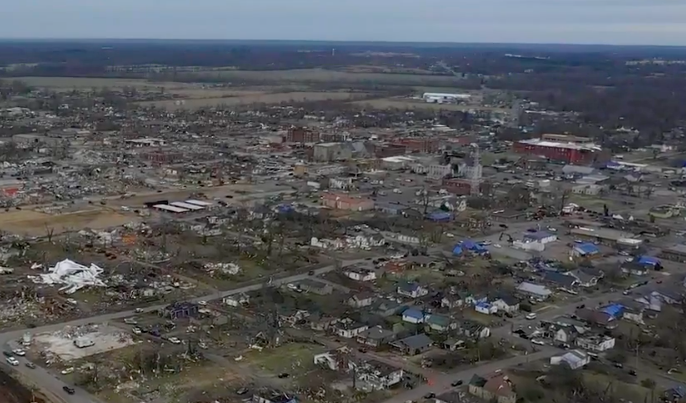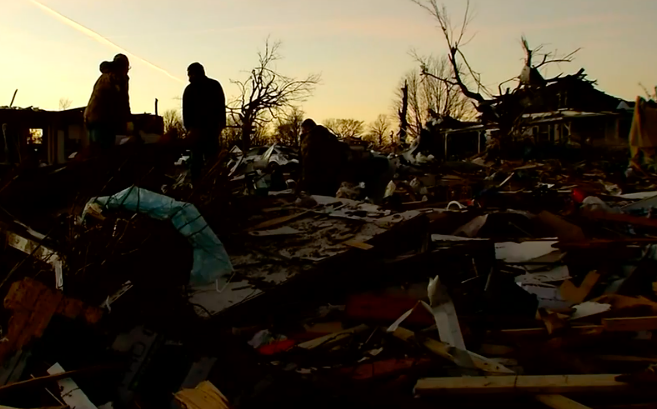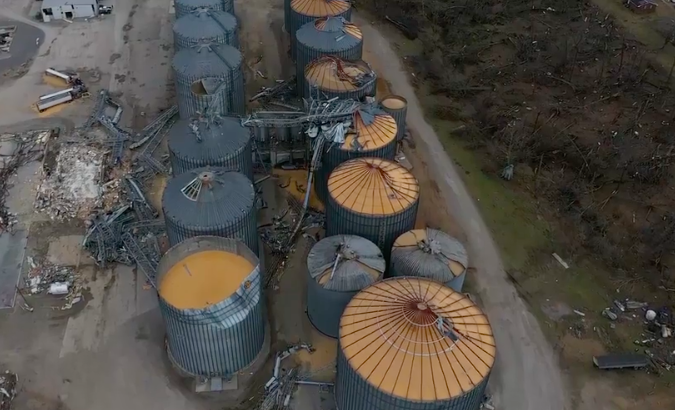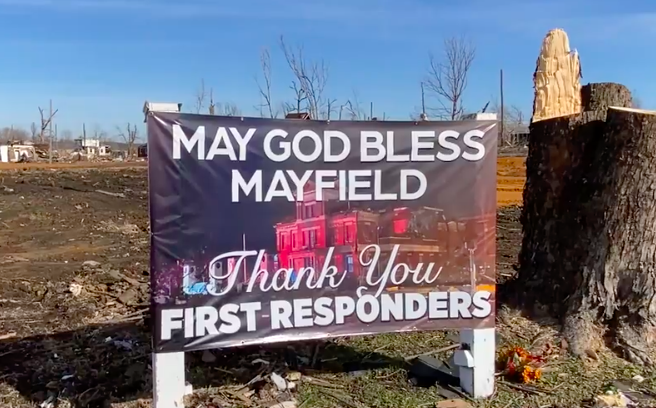Kentucky Farmers Endure Epic Ruin And Worst Storm Damage In State History As Agriculture Rushes To Rebuild
Kentucky Tornado Farm Journal Report
On Dec. 10, 2021, a tornado charged across the Midsouth demolishing towns and farms in its path.
“You could not have charted a path with more destruction throughout rural Kentucky than what happened in mid-December,” says Ryan Quarles, Kentucky Commissioner of Agriculture.
The EF4 tornado was the deadliest tornado in the state's history, resulting in 58 fatalities.
"When I got there, there were still people who were injured and walking around. It was just terrible,” says Keith Lowry, a farmer just 10 miles south of Mayfield, Ken. “There's nothing left in downtown Mayfield for 10 to 12 city blocks. There won't be anything left on in downtown Mayfield.”

200 Miles of Devastation
Along its 200-mile path, the tornado also destroyed a research farm vital to the state's ag industry.
“Our agriculture industry got hit more than any other industry in our state. Literally we have a path of destruction from the Bootheel of Missouri to just south of Louisville, Kentucky,” Quarles says. “We have deceased livestock just south of Louisville. If you work your way back toward western Kentucky, we have collapsed grain centers, grain silos and the poultry industry got pummeled with close to 30 poultry barns completely collapsed or damaged beyond repair.”

Mayfield, Ken., is considered ground zero for the devastation caused by the December tornado. As Lowry detailed, block after block of the town was crushed by the storm.
“I made a call to the mayor and to the judge executive. They said just come on up, we've got big problems,” he says.
That call happened at 2:30 a.m., and a few hours later Lowry, who also owns heavy machinery and operates a trucking company, headed for Mayfield.
“When I got there, they had three or four medical emergencies they could not get to. So we took our heavy equipment and cleaned up some streets. I’ve never seen anything like it — it's just like a bomb went off."
While there's been a steady stream of cleanup efforts blanketing the rural town, the work has only started.
“We've been at it for six weeks, and you can hardly tell we've done anything. It's just that much devastation,” Lowry says.
Losses Continue to Mount
As the cleanup continues, the price tag of the devastation is still unknown.
“We don't know how expensive this tornado storm system will be toward Kentucky agriculture. But what we do know is it will be the most expensive storm damage for ag that our state has ever seen," he adds. "There's no question about it."

As residents work to rebuild, the costs of materials have climbed, and some materials are now in short supply.
“Another big issue in our state right now is the lack of fencing,” Quarles says. “There are literally areas where you don’t know where the property lines are anymore. Plus, you have debris, nails or other items that can be harmful to livestock. So we're still dealing with sorting livestock properly, beef cattle, and also animal welfare issues.”

Grain bins were also crushed, raising questions about where the 2022 harvest will be stored.
"One of our local granaries had close to 6 million bushels of grain destroyed, and I don't think it's going to be salvageable for the chicken industry, which is very big for Graves County, and as of today, were still hauling it out," says Lowry.
That feed mill is a main artery for poultry feed, as it supplies close to 200 farms.
“The local granary — we're hoping and praying somebody will come in there and rebuild because we need that grain. The chicken industry needs the grain,” Lowry adds.
Agriculture Rallies to Help
While some business might never rebuild, what’s happened in the days and weeks after the tornado is something Quarles says is nothing short of remarkable.
"What's interesting is that agriculture is taking care of agriculture. A Pilgrim’s Pride hatchery got hit — 8 million chicks gone, females out, but Tyson's helping supply the feed right now. So we're trying to help out each other,” Quarles says.
“I have to brag on my fellow farmers. They were called into duty, and we showed up,” Lowry says. “If you know the farming community well enough, we don't have to be asked, we just get there, we get the job done. We will get the job done eventually, but it seems like it's a never-ending process.”
While the support has been local, relief has also been pouring in from miles away.
“I'm just humbled to see the random acts of kindness from Americans I have never met,” Quarles says. “We had donations of feed troughs, we've had 1,800 pairs of gloves. We have feed and hay coming in from all corners of the United States. And, of course, there's the monetary donations, as well.”
Quarles says the Kentucky Department of Agriculture and the Kentucky Farm Bureau set up a GoFundMe page called the Kentucky Agriculture Relief Fund. Last week, the relief fund eclipsed over $1 million to help Kentucky rebuild.
“I don't know if we'll ever see it back like it was, we probably won't, but it's time for us to rebuild. We will rebuild and we will come back stronger,” Lowry says.
How to Help
The Kentucky Department of Agriculture and the Kentucky Farm Bureau Federation are joining forces to create Kentucky Agriculture Relief Fund. The groups have created a GoFundMe page to help provide resources for agricultural-related recovery efforts for farmers affected by the widespread and devastating storms on Dec. 10-11, 2021.








